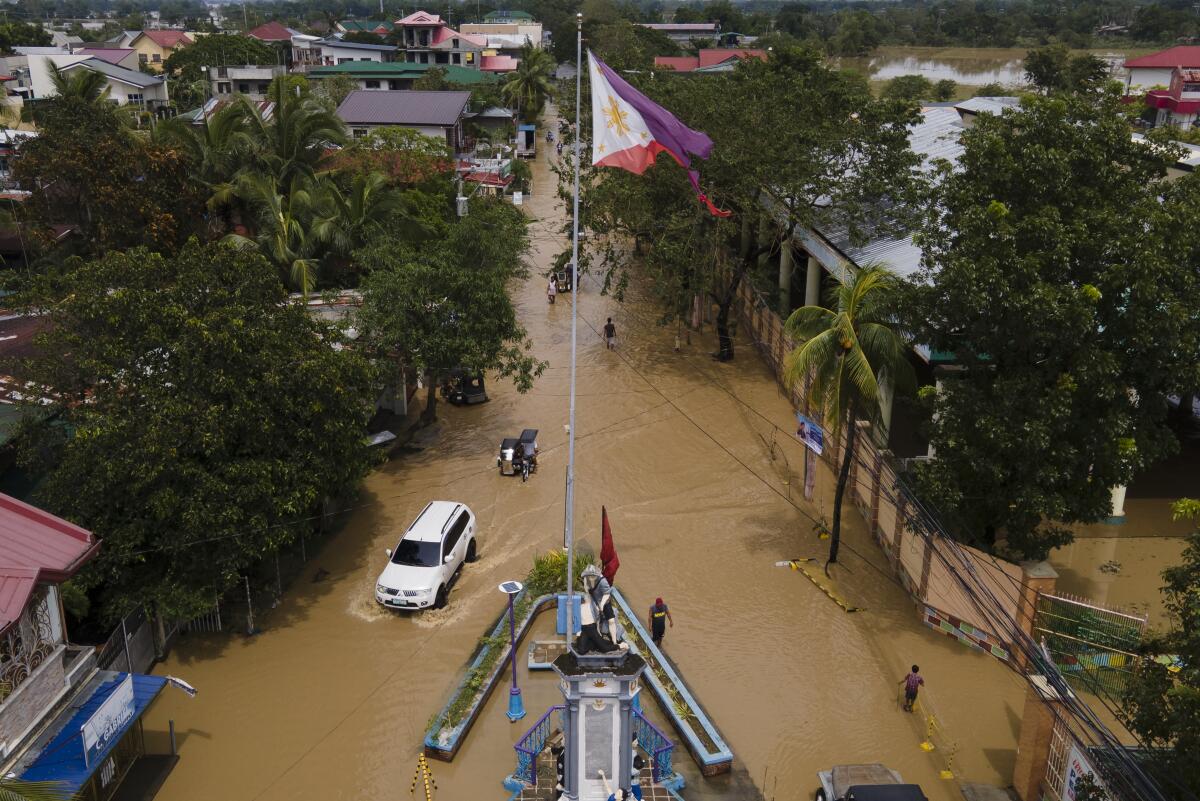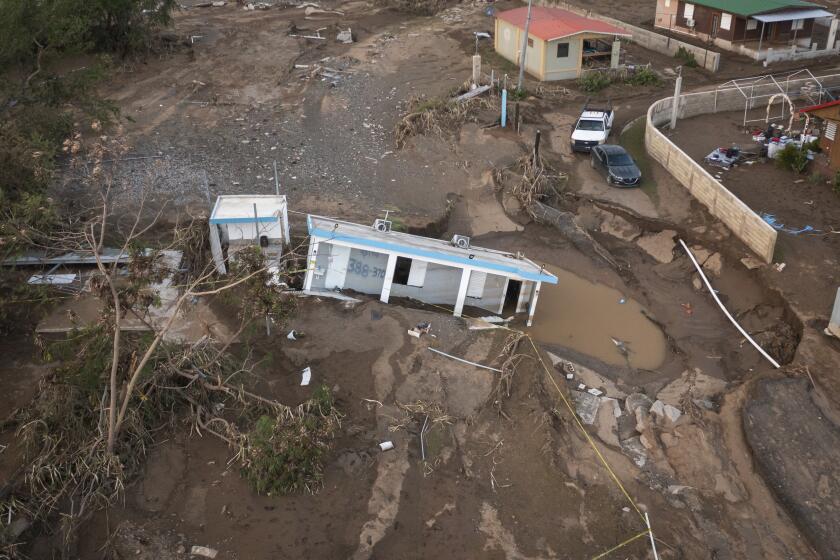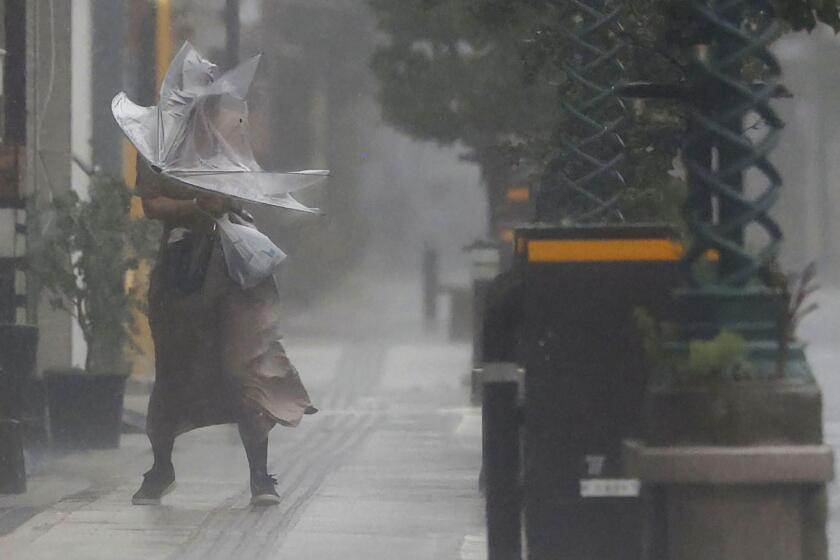Powerful typhoon leaves 5 rescuers dead in north Philippines

- Share via
MANILA — Typhoon Noru blew out of the northern Philippines on Monday, killing six people, knocking out power in two provinces, trapping villagers in floods and forcing officials to suspend classes and government work in and around the capital.
The most powerful typhoon to hit the country this year slammed ashore in the town of Burdeos in Quezon province before nightfall Sunday, then weakened as it barreled overnight across the main Luzon region, where more than 52,000 people were moved to emergency shelters, some forcibly, officials said.
Gov. Daniel Fernando of Bulacan province, north of Manila, said five rescuers, who were using a boat to help residents trapped in floodwaters, were hit by a collapsed wall and then apparently drowned in the rampaging waters.
“They were living heroes who were helping save the lives of our countrymen in the calamity,” Fernando told the DZMM radio network. “This is really very sad.”
Police said a Bulacan villager drowned after refusing to heed appeals to leave his riverside house. Authorities were separately trying to confirm another death in Burdeos town and a missing farmer in a flooded village in western Zambales province.
In Aurora province’s hard-hit Dingalan town, more than 6,000 houses were damaged, and a newly built evacuation center housing more than 200 displaced families was battered by the fierce wind and rain, but no injuries were reported, officials said.
Officials are fanning out across Puerto Rico to gauge the damage inflicted by Hurricane Fiona.
About 3,000 people were evacuated to safety in metropolitan Manila, which was lashed by fierce wind and rain overnight. Classes and government work were suspended Monday in the capital and outlying provinces as a precaution although morning skies were sunny.
The entire northern provinces of Aurora and Nueva Ecija, which were hit by the typhoon, remained without power Monday, and repair crews were at work to bring back electricity, Energy Secretary Raphael Lotilla told President Ferdinand Marcos Jr. in a televised meeting.
Marcos praised officials for evacuating tens of thousands of people before the typhoon hit, preventing more deaths, but expressed concern at how Noru and another storm that devastated central and southern provinces in December rapidly intensified into super-typhoons.
“Is this climate change?” Marcos, who took office in June, asked. “We have kept watch on these storms for a long time, but it wasn’t like this before. ... This is something I have to deal with.”
A powerful typhoon has slammed ashore in southern Japan and is pounding the region with strong winds and heavy rain, triggering blackouts and evacuations.
Marcos later joined an aerial inspection of typhoon-hit provinces in the rice-growing region, where many villages and stretches of roads remained flooded.
Noru underwent an “explosive intensification” over the Pacific Ocean before it hit the Philippines, Vicente Malano, who heads the country’s weather agency, told the Associated Press on Sunday.
After winds of 53 mph Saturday, Noru was a super typhoon just 24 hours later with winds of 121 mph.
By Monday noon, Noru had sustained winds of 81 mph and gusts of 99 mph and was moving northwest in the South China Sea toward Vietnam, according to the weather agency.
In 2013, Typhoon Haiyan, one of the strongest recorded tropical cyclones in the world, left more than 7,300 people dead or missing, flattened entire villages, swept ships inland and displaced more than 5 million in the central Philippines — well to the south of Noru’s path.
More to Read
Sign up for Essential California
The most important California stories and recommendations in your inbox every morning.
You may occasionally receive promotional content from the Los Angeles Times.












